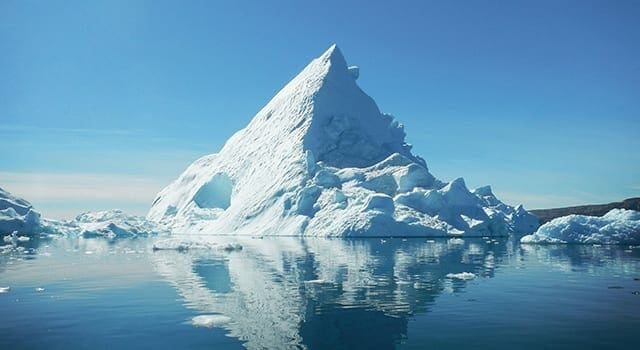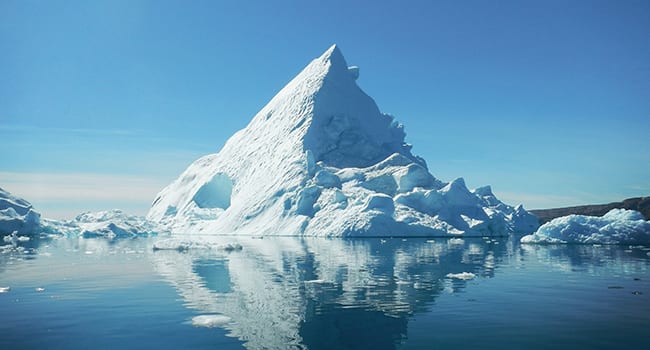Nations scramble for Arctic oil, gas and minerals amid rising global demand

For interview requests, click here
“Go West, young man, go West… and grow up with the country” is a phrase attributed to Horace Greeley from the New York Daily Tribune back in 1865.
In 2025, the phrase might be updated to “Go North, young man, go North” as optimism rises about the potential of oil and gas and critical minerals in the Arctic.
Optimism about the size of the prize of Arctic hydrocarbons rose in 2012 when the U.S. Energy Information Administration (EIA) assessed that the Arctic holds an estimated 13 per cent (90 billion barrels) of the world’s undiscovered conventional oil resources and 30 per cent of its undiscovered conventional natural gas resources. The EIA has estimated that the Arctic may hold most of the world’s remaining untapped oil and gas reserves.
Although the argument that U.S. shale production is peaking is questionable, the fact that production has grown more slowly in recent years (according to the EIA) is making the challenging but ample reserves in Alaska more attractive. More urgently, the Arctic could also be a vital supplier of critical minerals and the race for those minerals is “heating up the Arctic”.
 The Arctic is becoming central to global energy and mineral strategies. |
| Recommended |
| IEA under fire as Trump reshapes global energy policy
|
| Overregulation is killing Canada’s energy sector
|
| Was Justin Trudeau the oil industry’s villain or unexpected ally?
|
The Arctic Economic Council’s latest “Arctic Mining Report 2024” states that 31 of the 34 materials identified as essential for technologies like renewable energy installations and electric vehicle batteries are found in the Arctic, with Greenland having one of the world’s largest deposits of nickel and cobalt, while Alaska has one of the largest zinc mines globally.
U.S. President Donald Trump’s Jan. 20 executive order, “Unleashing Alaska’s Extraordinary Resource Potential,” reversed U.S. President Joe Biden’s previous policies, reopened vast areas for drilling and mining, and expedited permits for projects, stoking enthusiasm for development. Discussions of the challenges, geopolitical elements like tariffs, development costs, and project plans have begun.
I had the chance to catch up with Heather Exner-Pirot, a senior fellow at the Macdonald-Laurier Institute and expert on transitioning from ambition to reality and scaling up investment in Canada’s North. Exner-Pirot recognizes the geopolitical motivations behind Arctic development, including energy transition, defence and supply chains that are overly dependent on China.
“Trump is talking about Greenland for its critical minerals,” Exner-Pirot said. “Canada’s talking about critical minerals and critical mineral alliances. That’s positive. I’m definitely in favour of developing the region. But the flip side of that is the economic drivers. Commodity prices have not matched the rhetoric. Investment is still very difficult. Climate change doesn’t make it cheaper. In many ways, it is more expensive because things like ice roads are more difficult to build because we have melting permafrost. The rhetoric and the reality are still far apart.”
The upside is that development would benefit communities and the Canadian military as much as resource companies. Infrastructure may be expensive, but sharing the burden for things like fibre-optic communications connecting to a mine could also benefit communities or a NORAD site. Ultimately, according to Exner-Pirot, every territory will have favourite projects.
I also spoke with Katie Kachur, VP of Government Relations West at the Canadian Propane Association, who further described the complications of Arctic development.
“The biggest challenge in Arctic energy development lies in balancing the unique energy needs of rural, remote, and Indigenous communities with the broader goals of reliability, affordability, and low emissions,” Kachur said. “Unlike urban centers, these communities often face limited access to traditional energy infrastructure and depend on solutions tailored to their geography, climate, and cultural priorities. (They need) an approach emphasizing energy choice—offering diverse and flexible energy options that meet these unique needs.”
A growing trend in Arctic energy development mirrors efforts across Canada—direct engagement with Indigenous and remote communities to understand their energy needs and co-develop solutions. Policies emphasizing energy diversity, equitable access, and Indigenous ownership are gaining traction.
In Northern Canada, regulatory processes are under review as provinces and territories push for resource development. Streamlining regulations remains a key theme in 2025, driven in part by former Trump’s push to fast-track federal permits, attract American investment and shorten approval timelines for major energy projects.
One of the largest projects is the $44-billion Alaska LNG project, which aims to develop natural gas resources on Alaska’s North Slope and transport them via a 1,300-kilometre pipeline to a proposed liquefied natural gas (LNG) plant. New York-based Glenfarne and the Alaska Gasline Development Corporation are leading the initiative, which has attracted interest from Japanese trading giant Mitsui, a major LNG investor.
Given the high costs of Arctic infrastructure, Canadian stakeholders could look to this project for insights on funding strategies and development approaches in extreme conditions.
Maureen McCall is an energy business analyst and Fellow at the Frontier Center for Public Policy. She writes on energy issues for EnergyNow and the BOE Report. She has 20 years of experience as a business analyst for national and international energy companies in Canada.
Explore more on Arctic, Energy sector, Mining
Troy Media is dedicated to empowering Canadian community news outlets by providing independent, insightful analysis and commentary. Our mission is to support local media in fostering an informed and engaged public by delivering reliable content that strengthens community connections, enriches national conversations, and helps Canadians better understand one another.

